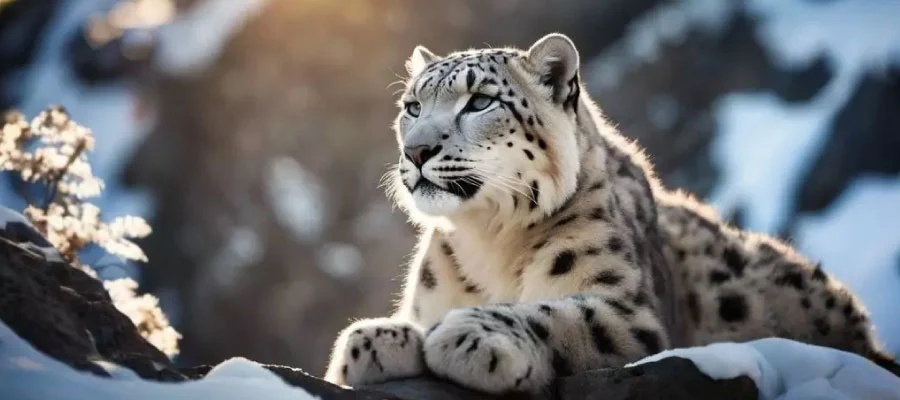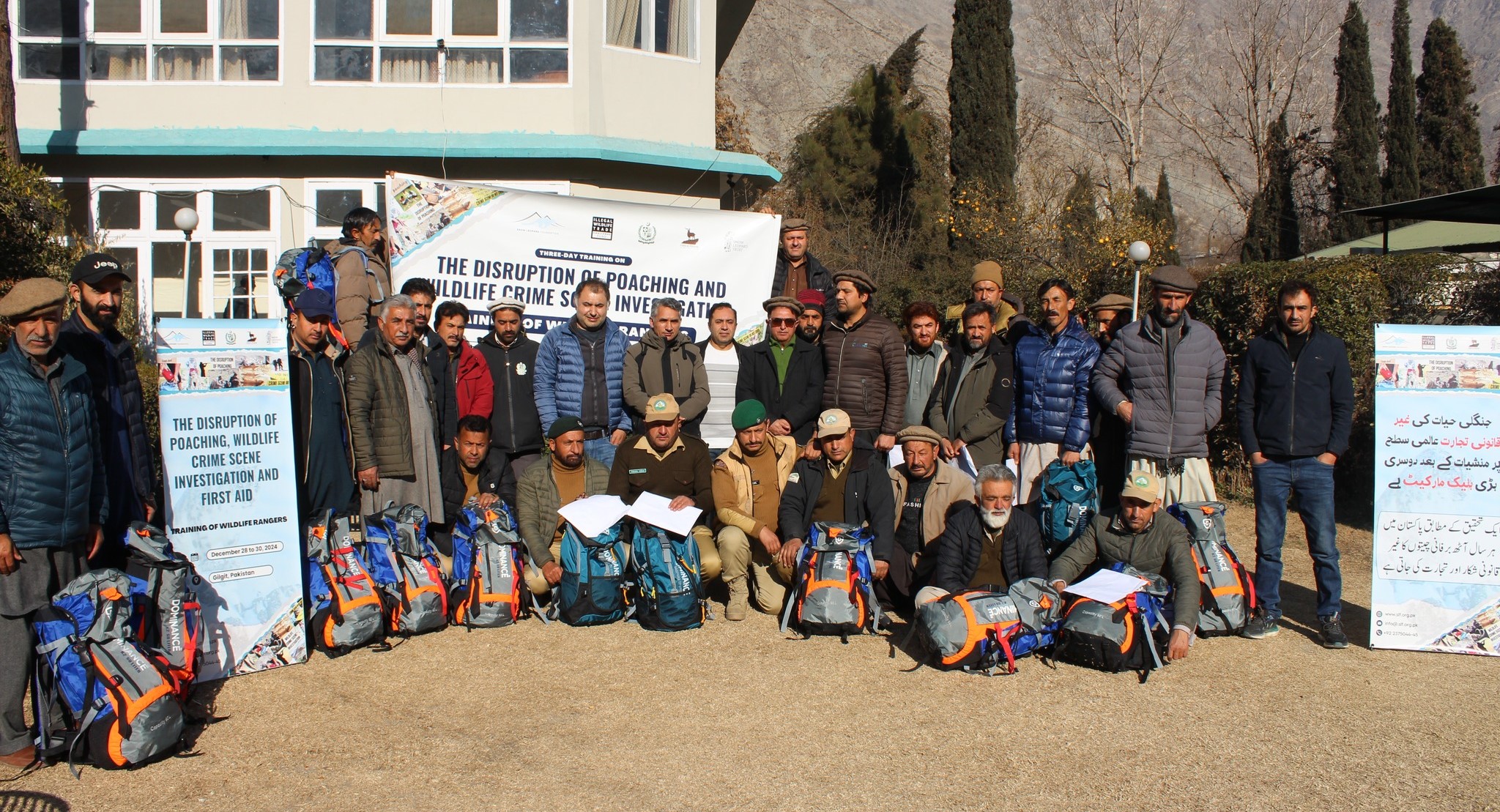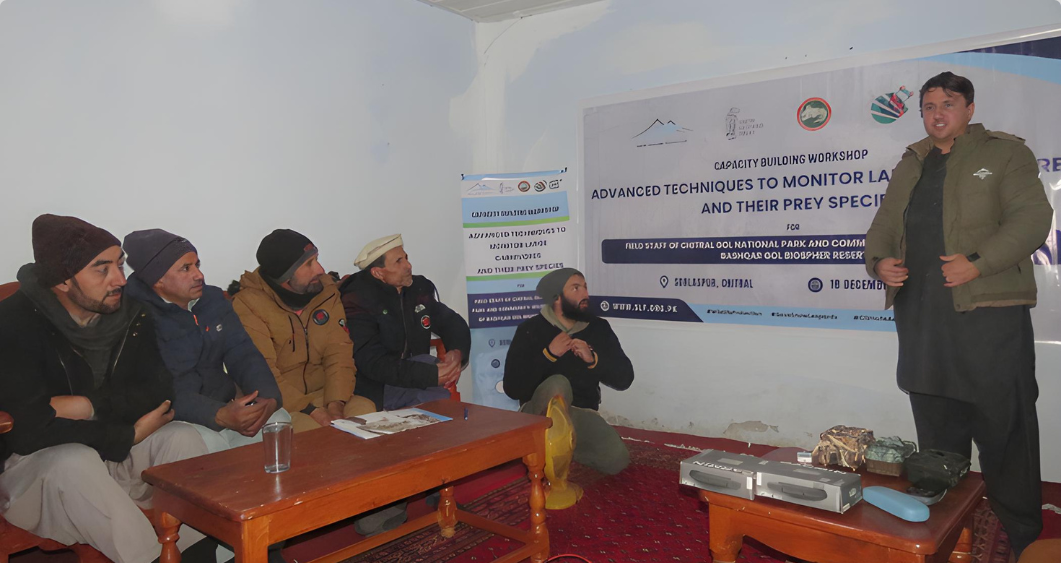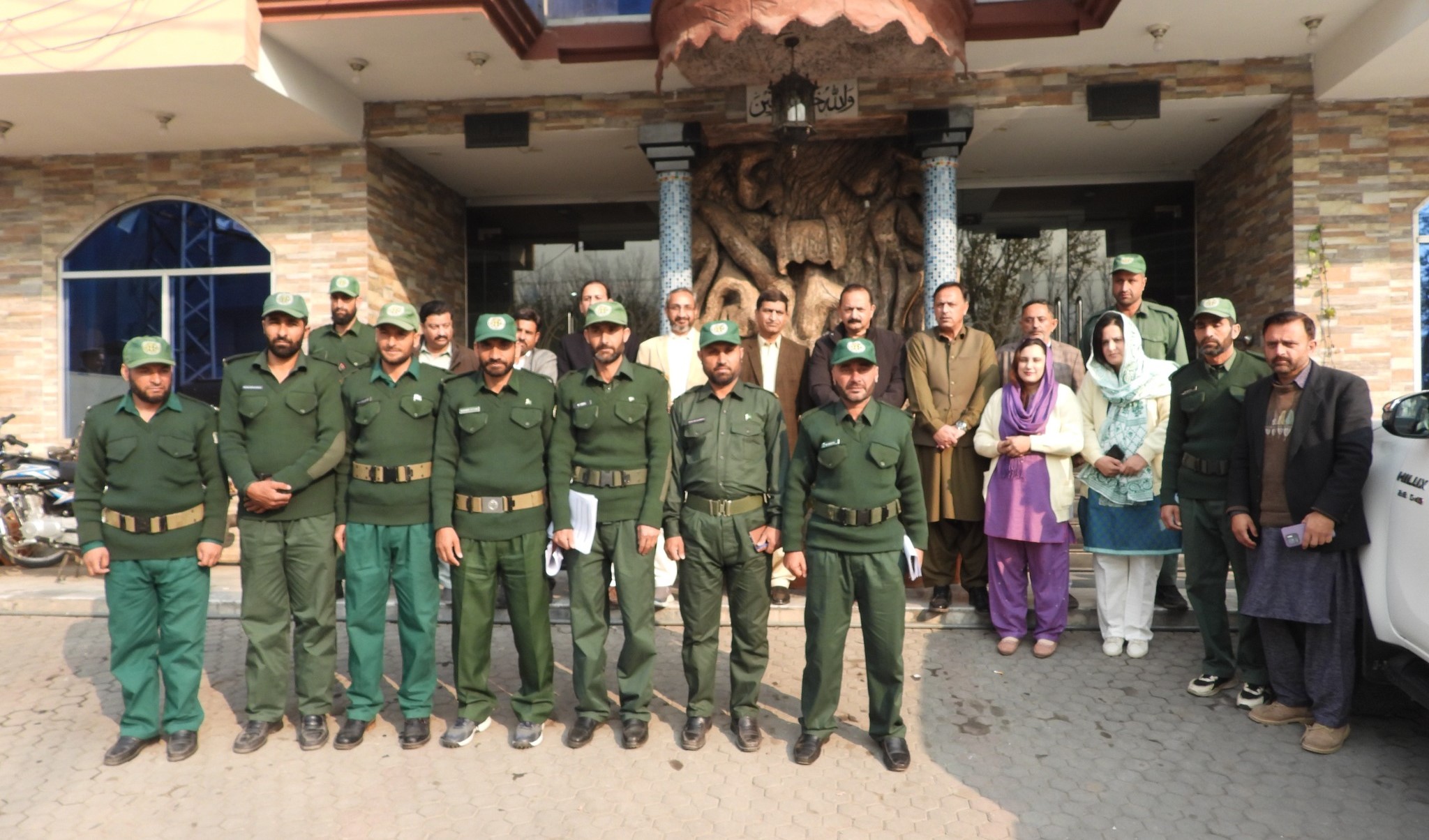Snow Leopard Foundation (SLF) participated in one-day workshop organized by the Pakistan Museum of Natural History (PMNH) in Islamabad on ‘Exchange of Information on Snow Leopard Population in Pakistan’. The workshop was organized in the backdrop of an article published in Science magazine about the down listing of snow leopard status from endangered to vulnerable by IUCN red list. In the said article, the authors had shared their opinion and reservations about the IUCN decision. A debate had started on online forum in Pakistan soon after the publication of said article. PMNH took the initiative and offered a platform for all persons involved in the debate to present their case and share opinions with the conservation community under one roof. The idea was appreciated and welcomed by SLF and other stakeholders as well. Representatives from Ministry of Climate Change, Wildlife Department Officials from KPK and AJ&K, representatives of NGOs and students attended the workshop.
Director General PMNH Dr. Muhammad Rafique explained the need for organizing the workshop in his welcome address. He thanked all the participants for their presence, “your presence indicates the dedication and sincerity towards conservation efforts in Pakistan and to address the issues sensibly”. He further added that he is hoping to have a positive and constructive discussion today which could enable us to make strong recommendations to IUCN to review the decision of downgrading of snow leopard status. Director SLF Dr. Muhammad Ali Nawaz shared his views on ‘Snow Leopard Population Research Overview’. He explained the research and field survey methodologies adopted by SLF which helps in determining population of snow leopard in Pakistan. Camera trapping is the most advanced tool of research and surveys for SLF. Camera trapping is not just photography for posting pictures on facebook or websites but it gives loads of information about species identification, behavior and other useful data. Our teams conduct this activity on regular basis and we are glad to inform you that we have covered 30% of snow leopard range in Pakistan so far. In comparison to only 2% coverage globally of snow leopard habitats. Even these days our team is out for camera trapping activity in Gilgit Baltistan region. This is not an easy exercise, it takes lot of courage, time and resources to conduct this activity which takes around 60-70 days from installation to take down. He also shared his views on IUCN decision and suggested that it would have been appropriate if the red list committee had consulted the relevant stakeholders in Pakistan and also the mechanism used by IUCN to determine the population was not very impactful. The selected habitats were only 2% and that too with dense population of snow leopards. Dr. Ali stressed on the need for a collective effort by the conservation community and stakeholders so that such issues can be resolved with facts and validated information and data collected from the snow leopard range by various conservation organizations and wildlife departments.
Mr. Ashiq Ahmad Khan presented the background and scope and importance of ‘Population Assessment of World’s Snow Leopards’ (PAWS). The GSLEP initiative to assess the snow leopard population in 12 range countries. He shared the importance of PAWs and described why population estimates are necessary to formulate effective conservation policies.
There was a discussion session in the second half of the workshop, all participants shared their inputs and suggestions. The recommendations included that a national level forum to be established for information sharing and validation. Ministry of Climate Change to take lead role in challenging the IUCN decision of downgrading snow leopard status, a national red list to be established with the consensus of all stakeholders.



